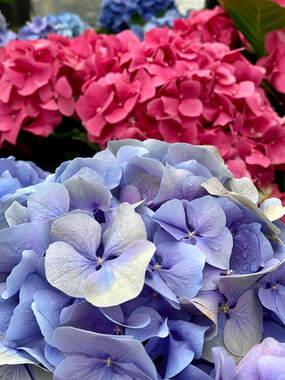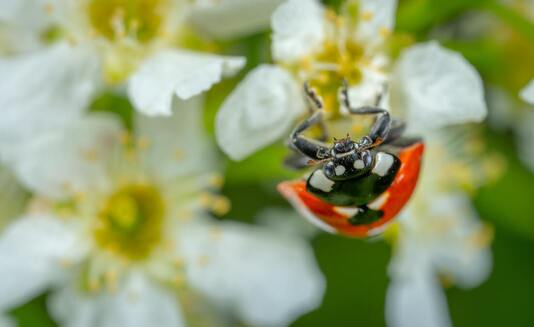Fertilize and Feed!  Lawns: A mid-summer fertilizer application can be made on Bermudagrass, St. Augustine (Charleston) grass and Zoysiagrass lawns. Apply .5-1 pound of actual nitrogen per 1000 ft². Preferred formulations are a slow release form of a 15-0-15, 16-4-8 or 12-4-8. Be sure there is adequate moisture available to move the fertilizer off the grass and into the soil. If your lawn is suffering from compaction now is the time to aerate it. Core aeration, using a sod-coring tool or a core aerating machine, is preferable to using a tool with tines to punch holes in the lawn. The core tool will remove pieces of sod that can then be broken up and raked over the top of the lawn. Core aeration will create more pore space for water movement and healthy root growth. Again, be sure that adequate moisture is available for the newly forming roots. For more information on aeration please visit: https://hgic.clemson.edu/factsheet/aerating-lawns/ Trees and Shrubs: Trees and shrubs can also now receive a second, lighter application of fertilizer than the one applied in the spring. If your plants appear stressed or diseased, a fertilizer application may only stress the plant more. So be certain there is adequate moisture in the soil for new root growth and the plant appears healthy. If you haven’t mulched your plantings think about doing it now. Be sure the soil is moist. Spread the mulch evenly over the area around the plants to a depth of 3-4 inches. Be sure that the mulch is placed a couple of inches away from the stem or trunk of each plant. If the trees and shrubs are surrounded by lawn which has been fertilized, an application may not be necessary. To calculate how much fertilizer is needed please visit: https://hgic.clemson.edu/factsheet/fertilizing-trees-shrubs/ Annuals and Perennials: Annuals especially need fertilizer applied in multiple doses over their long period of blooming. Perennials need adequate nutrients to be sure they come back strong the next year. If you didn’t have your soil tested, consider doing that now. Otherwise apply a slow release fertilizer, such as a 12-6-6, 12-4-8 or 16- 4-8 at the rate of 1 to 2 pounds per 100 ft² and repeat every six weeks. You can also use one of the Espoma organic fertilizers at a rate of 4-7 pounds per 100 ft². Plant Problems: With warm temperatures and high humidity come lots of pests and diseases of plants. If you use an overhead irrigation system, make sure it runs during the early morning hours. If you hand water be sure to direct the water towards the ground or the soil in potted plants and not the foliage. Be careful not to overwater as plant roots may rot and dieback of branches and stems may occur. Keep a look out for the start of fungal leaf spots in lawns and on the foliage of ornamental plants as well as fruit and vegetable plants. Plant problems that have been brought to the nursery recently have included muhly grass mealybugs, green stinkbugs on tomatoes, dieback on gardenia, citrus leafminer, cercospora leaf spot of citrus, and anthracnose on Sunshine ligustrum. Correct identification of a pest is critical to determining how to manage it. Your perceived pest may actually be a gardener’s friend. There are many beneficial insects and other arthropods that can help reduce pest populations so encourage them to take up residence in your yard. To learn more about the ‘good” bugs please visit:
https://hgic.clemson.edu/factsheet/incorporating-beneficials-into-the-gardeners-toolkit/ We’ve also seen nutrient deficiency problems such as interveinal chlorosis due to a magnesium deficiency or too low of a soil pH. So be sure to have your soil tested. Correct any pH issues so your plants will be able to get maximum benefit from the fertilizers that you apply. For directions on taking a soil sample please visit: https://hgic.clemson.edu/factsheet/soil-testing/ |
Categories
All
Archives
June 2024
|


 RSS Feed
RSS Feed



